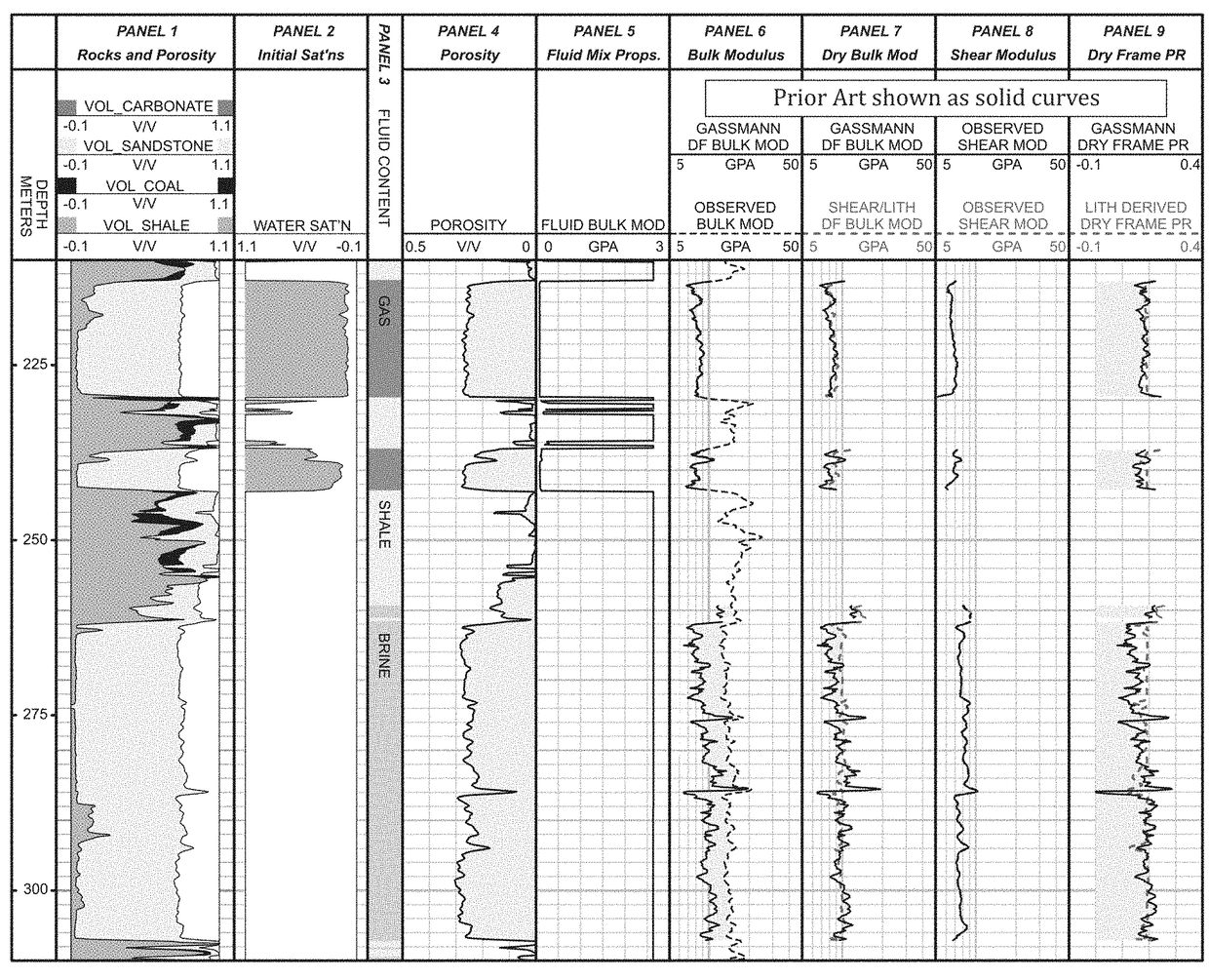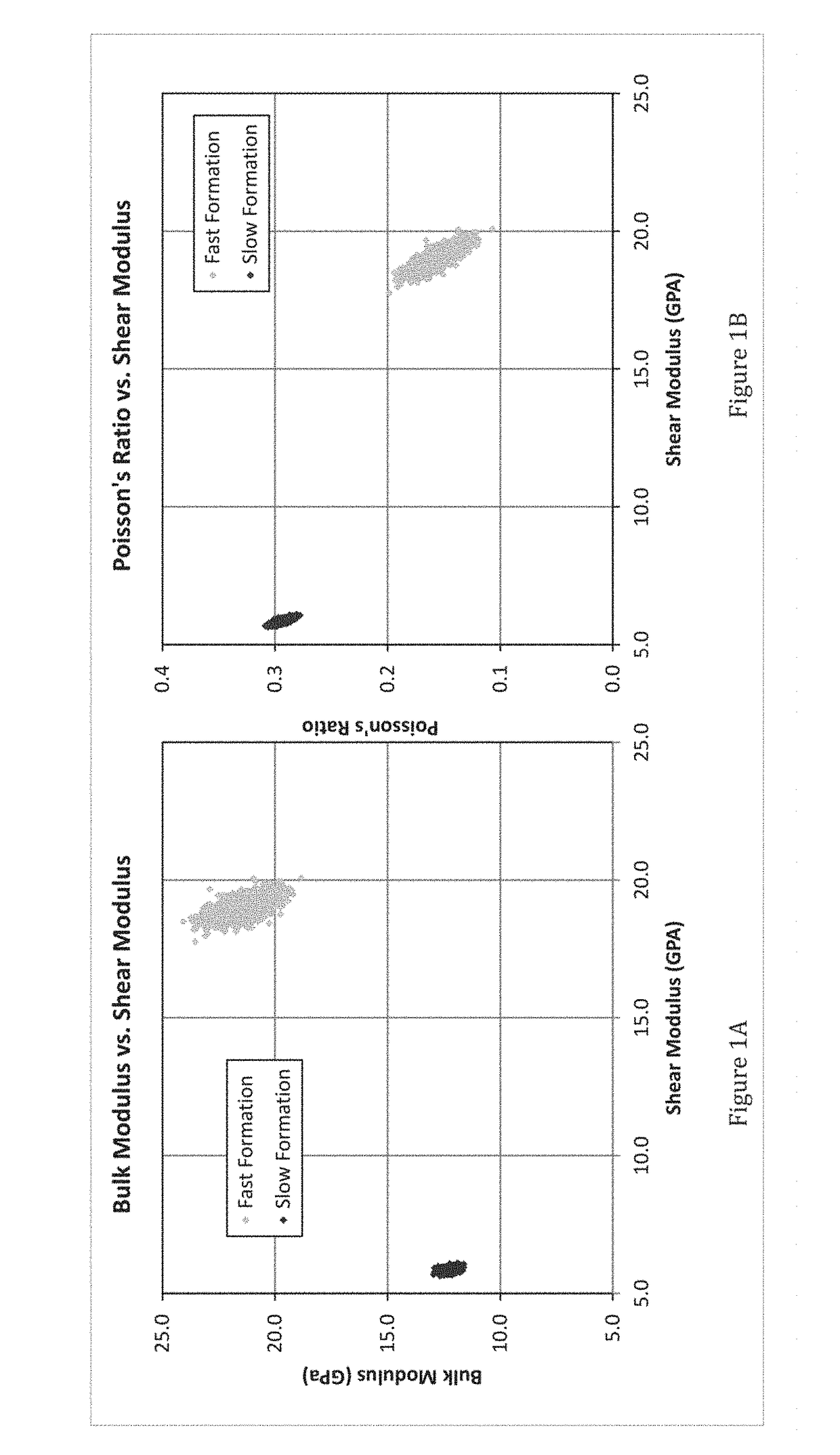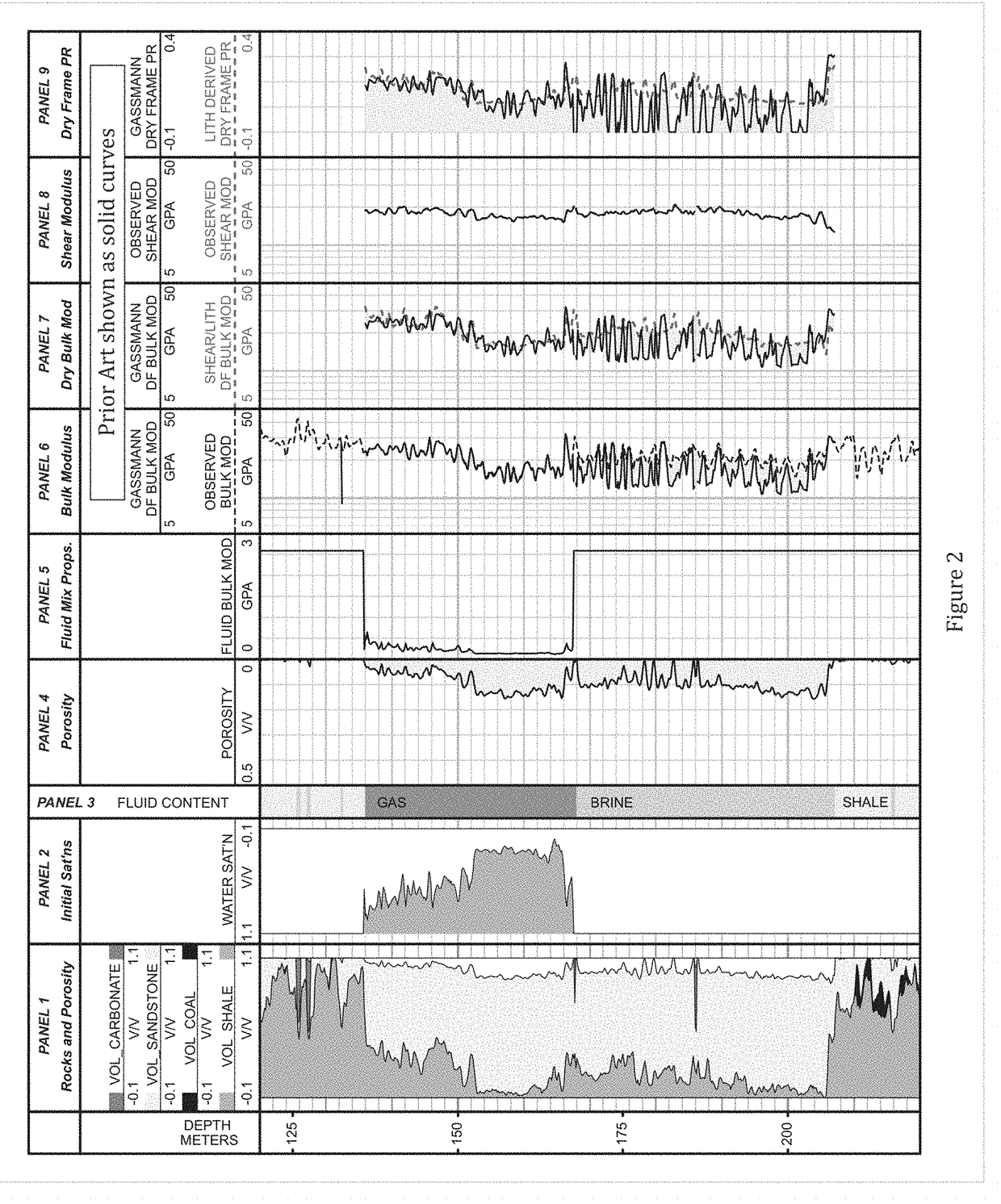System and method for modeling the effects of fluid changes in low porosity hydrocarbon reservoirs
a hydrocarbon reservoir and fluid change technology, applied in the field of fluid change effects modeling in low porosity subsurface reservoirs, can solve the problems of increased uncertainty in the computed dry frame bulk modulus of low porosity reservoirs, errors in estimated fluid effects, and poor seismic response to fluid changes
- Summary
- Abstract
- Description
- Claims
- Application Information
AI Technical Summary
Benefits of technology
Problems solved by technology
Method used
Image
Examples
first embodiment
[0034]In the first embodiment, the petrophysicist is confident in the in-situ saturation interpretation. The fluid effects are determined by applying the Gassmann equation to dry frame bulk modulus calculated from recorded shear modulus and estimated Poisson's ratio, and the recorded compressional log adjusted from in-situ to modeled saturation according to the calculated fluid effects.
second embodiment
[0035]In the second embodiment, the petrophysicist cannot determine if the formation is brine saturated or has low gas saturation. Because the saturation is indeterminate, so is any fluid effect on the compressional sonic log. Dry frame compressional velocity is estimated from dry frame density and bulk and shear moduli. Compressional velocity at modeled saturation is calculated by running the Gassmann equation on dry frame elastic properties without relying on a saturation interpretation.
[0036]In an extension of this embodiment, a comparison of modeled and recorded compressional sonic logs is used to diagnose in-situ fluids.
[0037]The second embodiment is also appropriate if the petrophysicist is more confident in the shear than the compressional log data quality as it permits creating a synthetic compressional sonic log for comparison with the recorded data or to overwrite it.
[0038]The present invention overcomes the instability inherent in present day Gassmann equation based compu...
PUM
 Login to View More
Login to View More Abstract
Description
Claims
Application Information
 Login to View More
Login to View More - R&D
- Intellectual Property
- Life Sciences
- Materials
- Tech Scout
- Unparalleled Data Quality
- Higher Quality Content
- 60% Fewer Hallucinations
Browse by: Latest US Patents, China's latest patents, Technical Efficacy Thesaurus, Application Domain, Technology Topic, Popular Technical Reports.
© 2025 PatSnap. All rights reserved.Legal|Privacy policy|Modern Slavery Act Transparency Statement|Sitemap|About US| Contact US: help@patsnap.com



